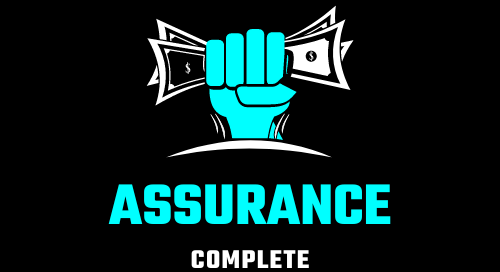
Large increases or decreases in a company’s output can lead to variable costs in categories like utility bills, payroll, or distribution. The per-unit variable cost of production remains constant for a given level of output, but the per-unit variable cost increases as the volume of output increases. Unlike fixed costs which are always the same, variable costs increase or decrease based on a company’s production. For example, a surfboard factory may double its staff to increase production just before summer begins and then return to normal staff levels in the fall. Utilities include expenses related to essential services required to operate the business, such as electricity, water, gas, and internet.
How Do You Calculate Operating Expenses?
- The operating cost is deducted from revenue to arrive at operating income and is reflected on a company’s income statement.
- An operating expense is an expense that a business incurs through its normal business operations.
- This section will discuss the common fixed expenses and the concepts of depreciation and amortization, as they relate to fixed costs.
- The following formula and steps can be used to calculate the operating cost of a business.
- Operating leverage is a cost structure metric used in cost structure management.
Expenses can be divided into several different types, including equipment costs, inventory, and facilities costs. These business expenses can be further divided into overhead or operating costs, each of which depends on the nature of the business being run. The more fixed costs a company has, the more revenue a company needs to generate to be able to break even, which means it needs to work harder to produce and sell its products.
Operating Cost Ratios
An operating expense is an expense that a business incurs through its normal business operations. Often abbreviated as OpEx, operating expenses include rent, equipment, inventory costs, marketing, payroll, insurance, and funds allocated for research and development. In the service industry, fixed costs typically include expenses such as office space rent, utilities, and salaries.
Variable Cost vs. Fixed Cost: What’s the Difference?

Operating expenses are the costs incurred by a business for its operational activities. They include both variable costs, which change depending on the volume of goods or services produced, and fixed costs, which remain constant regardless of output. Efficient management of operating expenses is crucial for maintaining a company’s financial health and achieving fixed operating costs its desired profit margins. When setting the price for a product or service, businesses need to consider both fixed and variable costs to ensure profitability. Fixed costs are expenses that do not change with increases or decreases in production or sales volumes. Examples of common fixed costs include rent, utility bills, depreciation, and interest.
Examples of Operating Costs
By managing operating costs efficiently, organisations can improve their overall financial health and remain competitive in the market. Operating costs, also known as Operational costs, play a critical role in determining the financial health and success of a business. They represent the day-to-day expenses necessary to keep a business running and directly impact the company’s profitability. In addition, compensation and benefits for production personnel and direct labor may be classified under operating expenses for accounting purposes. Some companies also include the costs of goods sold (COGS) as an operating expense.
A variable cost can change, depending on the production and sales levels of products or services. Some firms successfully reduce operating expenses to gain a competitive advantage and increase earnings. However, reducing operating expenses can also compromise the integrity and quality of operations. Finding the right balance can be difficult but can yield significant rewards. The break-even point formula consists of dividing a company’s fixed costs by its contribution margin, i.e. sales price per unit minus variable cost per unit.

Variable Costs

Operating expenses are incurred by a company through its normal business operations. That means these expenses are required and cannot be avoided because they help the business continue running. An apparel manufacturing plant has estimated the variable cost to be $21 per unit. Forty percent of its business is with one preferred customer and the customer is charged at cost(without profit). The remaining 60% of the business is with several differant customers and they are charged $40 per unit.
- Capital expenditures are assets that are purchased and have a multiyear life, and are used in the operations of the business.
- In this way, a company may achieve economies of scale by increasing production and lowering costs.
- Operating Expenses (OpEx) represent the indirect costs incurred by a business to continue running its day-to-day operations.
- In the case of some rental properties, there may be pre-determined incremental annual rent increases where the lease stipulates rent hikes of certain percentages from one year to the next.
- Operating costs are reflected in the income statement after calculating the gross income.
- However, the potato supplier may offer the restaurant chain a price of $0.45 per pound when it buys potatoes in bulk amounts of 200 to 500 pounds.
- These types of expenses are composed of both fixed and variable components.
- Capital costs are one-time expenditures that a company incurs when it buys assets that improve its operations for a long period, typically over a year.
- This is because these are not directly linked to the production of goods or services.
- Even if you cannot bring in more revenue, you can decrease operating costs to increase your profit margin.
- Thus, you need to deduct operating expenses from total business revenue to compute the operating income of your business.
- Reducing your operating costs to a greater extent can negatively impact your business productivity and overall profit.
Operating expenses (OPEX) include the selling, general, and administrative expenses of a business. These are the costs that you incur to conduct normal business operations that are unrelated to production. Here, net profit is the difference between total revenue and total operating costs. The net profit ratio indicates the profitability of the business, with https://www.bookstime.com/ a higher percentage representing higher profitability. It is nearly impossible to calculate operating expenses for large multinational groups, but projections are often made when it comes time to line up budgets for the next fiscal year. For example, employees such as receptionists or secretaries may be compensated as part of administrative expenses.
